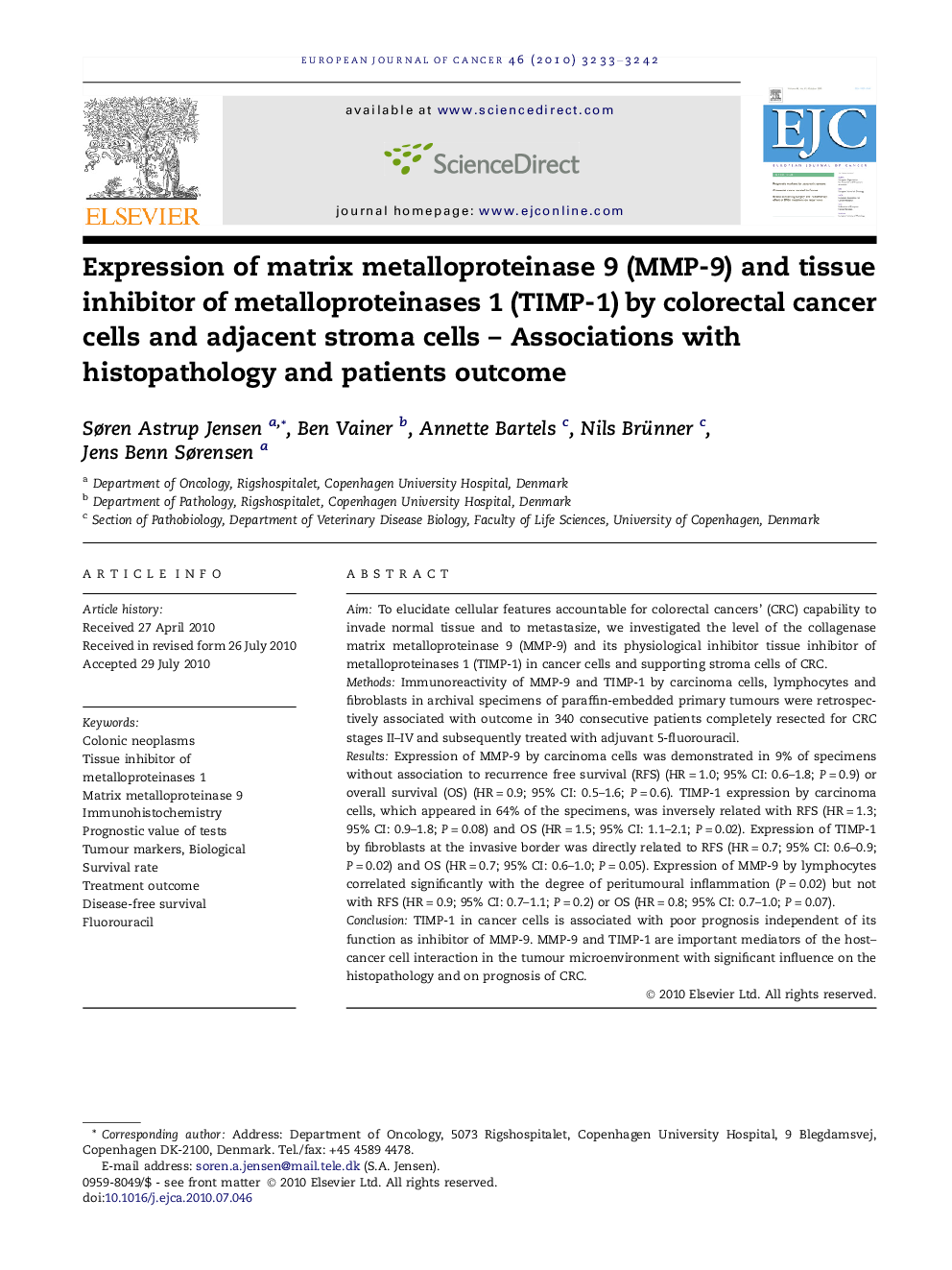| Article ID | Journal | Published Year | Pages | File Type |
|---|---|---|---|---|
| 2123826 | European Journal of Cancer | 2010 | 10 Pages |
AimTo elucidate cellular features accountable for colorectal cancers’ (CRC) capability to invade normal tissue and to metastasize, we investigated the level of the collagenase matrix metalloproteinase 9 (MMP-9) and its physiological inhibitor tissue inhibitor of metalloproteinases 1 (TIMP-1) in cancer cells and supporting stroma cells of CRC.MethodsImmunoreactivity of MMP-9 and TIMP-1 by carcinoma cells, lymphocytes and fibroblasts in archival specimens of paraffin-embedded primary tumours were retrospectively associated with outcome in 340 consecutive patients completely resected for CRC stages II–IV and subsequently treated with adjuvant 5-fluorouracil.ResultsExpression of MMP-9 by carcinoma cells was demonstrated in 9% of specimens without association to recurrence free survival (RFS) (HR = 1.0; 95% CI: 0.6–1.8; P = 0.9) or overall survival (OS) (HR = 0.9; 95% CI: 0.5–1.6; P = 0.6). TIMP-1 expression by carcinoma cells, which appeared in 64% of the specimens, was inversely related with RFS (HR = 1.3; 95% CI: 0.9–1.8; P = 0.08) and OS (HR = 1.5; 95% CI: 1.1–2.1; P = 0.02). Expression of TIMP-1 by fibroblasts at the invasive border was directly related to RFS (HR = 0.7; 95% CI: 0.6–0.9; P = 0.02) and OS (HR = 0.7; 95% CI: 0.6–1.0; P = 0.05). Expression of MMP-9 by lymphocytes correlated significantly with the degree of peritumoural inflammation (P = 0.02) but not with RFS (HR = 0.9; 95% CI: 0.7–1.1; P = 0.2) or OS (HR = 0.8; 95% CI: 0.7–1.0; P = 0.07).ConclusionTIMP-1 in cancer cells is associated with poor prognosis independent of its function as inhibitor of MMP-9. MMP-9 and TIMP-1 are important mediators of the host–cancer cell interaction in the tumour microenvironment with significant influence on the histopathology and on prognosis of CRC.
